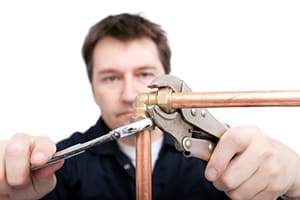Plumbing School Cost: What to Expect and How to Budget
Pursuing a career in plumbing can be both rewarding and lucrative. However, before you can start working in the industry, you'll need to decide on a training route: apprenticeship only or vocational training plus (a potentially shorter) apprenticeship. In this article, we will discuss the various factors that affect the cost of plumbing school, how to estimate your total expenses, and ways to save money on your education. By understanding these aspects, you can make an informed decision and budget accordingly.
- Factors Affecting Plumbing School Costs
- Estimating Total Costs
- Is Plumbing School Worth the Money?
- Ways to Save Money on Plumbing Schools Costs
Factors Affecting Plumbing School Costs
Tuition Fees
The most significant factor influencing the cost of plumbing school is tuition fees. Tuition can vary greatly depending on the institution and course offerings. Additionally, the length of the program can impact the overall cost. Shorter programs, such as certificate programs, tend to cost less than longer programs, such as associate degree programs. In the U.S., plumbing school tuition can range anywhere from $1,000 up to around $23,000.
Geographic Location
The location of the plumbing school you choose can also impact the overall cost. For example, schools in urban areas or regions with a higher cost of living may have higher tuition fees than those in more rural areas.
Type of Program
Several types of plumbing programs are available, mainly certificate, diploma, or associate degree programs. Certificate courses focus on specific technical skills and can typically be completed in a few months. Diploma programs provide basic training for entry-level positions and usually take one or two years to complete. Associate's degrees offer more in-depth instruction and can prepare students for higher-level jobs in the field. Some schools even offer master's degrees in plumbing engineering.
Certificates
A plumbing certificate is a short-term program that focuses on specific technical skills and is designed to help students upgrade their current skills or learn new ones. Courses may include installing and repairing domestic water systems, sanitary drainage systems, gas piping systems, irrigation systems, and more.
A certificate in plumbing is the shortest and least expensive option. Trade schools or community colleges typically offer these programs, and they can take as little as a few weeks to complete. The cost of a certificate program in plumbing can range from $1,000 to $3,000, depending on the institution and location. However, remember that a certificate alone may not be enough to secure a job in the field.
Diplomas
A plumbing diploma is typically a one or two-year program that provides basic training for entry-level positions in the field. The course material covers areas such as water supply systems, drain cleaning, soldering and gas fitting, plumbing code, and safety.
Diplomas in plumbing are slightly more advanced than certificates and typically take longer to complete. These programs tend to offer more in-depth training than certificates and may include hands-on experience in the field. The cost of a diploma program in plumbing can range from $3,000 to $10,000, depending on the institution and location. A diploma in plumbing can help you secure an entry-level job in the field.
Associate Degrees
An associate degree in plumbing is a two-year program that provides more in-depth training than a diploma or certificate. It typically includes courses such as plumbing systems design, fire protection systems, piping and tubular materials, and HVAC systems. This type of degree is often necessary for higher-level jobs in the plumbing field, such as plumbing inspector, laboratory technician, and draftsman. An associate degree can also give you the credentials you need to become a licensed plumber.
An associate degree in plumbing is the most comprehensive and expensive option. The cost of an associate degree in plumbing can range from $10,000 to $30,000, depending on the institution and location. However, a degree in plumbing can lead to higher-paying jobs and opportunities for advancement in the field.
Online Plumbing Program Options
Online plumbing training programs are becoming increasingly popular as a convenient and cost-effective way to learn the essential skills required to enter the field. Tuition costs vary widely depending on the program but typically range from $2,000 to $10,000. In addition, many schools offer online self-paced courses that can be completed in three to six months. These courses provide students with the flexibility to learn at their own pace, as well as access to expert instructors who offer live feedback and guidance. Some programs include lab courses where students gain hands-on experience working with plumbing materials and equipment.
Online plumbing courses are generally offered at all three levels: certificate, diploma, and associate degree.
Financial Aid
Financial aid availability can play a significant role in reducing the overall cost of plumbing school. Many schools offer financial aid options such as loans, grants, and scholarships to help students cover their education expenses. You may be surprised by what you could qualify for, so it's worth investigating.
Estimating Total Plumbing School Costs
In addition to tuition, there are other expenses you'll need to consider when budgeting for plumbing school:
Tools and Equipment
As a plumbing student, you'll need to purchase various tools and equipment required for your trade. The cost of these items can range from a few hundred to a couple of thousand dollars, depending on the quality and quantity of tools needed.
Trade school plumbing programs may also include the tools needed as part of the overall cost.
Textbooks and Learning Materials
The cost of textbooks for a plumbing program can vary widely depending on the school or program you choose and the books required for each course. However, on average, students can expect to pay between $500 and $1,000 for textbooks throughout their program.
Some programs may require students to purchase a bundle of textbooks at the beginning of the program, while others may require students to buy textbooks individually for each course. Additionally, some programs may offer digital versions of textbooks as an alternative to traditional print versions, which can be more cost-effective for students.
Additionally, students may consider purchasing used textbooks or renting textbooks from online retailers to save more money.
Certification and Licensing Fees
After completing your plumbing program, you'll need to obtain the necessary certifications and licenses to work in the field. These fees can range from $100 to $500, depending on the type of certification and the state in which you plan to work.
Certification Fees
To become a certified plumber, you'll need to pass an exam administered by a state-approved organization. The cost of the exam varies by state but typically ranges from $100 to $500. In addition to the exam fee, there may be additional costs for study materials, such as textbooks and practice exams. Some states also require continuing education courses to maintain your certification, which can cost anywhere from $50 to $200 per course.
Licensing Fees
Once you've obtained your certification, you'll need to apply for a plumbing license with your state's licensing board. The license application fee varies by state but typically ranges from $50 to $300. Some states also require a background check, which can cost an additional $50 to $100.
Renewal Fees
Depending on the state, plumbing licenses typically need to be renewed every 1-2 years. The renewal fee varies by state but typically ranges from $50 to $200. Some states also require continuing education courses to renew your license, which can cost anywhere from $50 to $200 per course.
Living Expenses
Lastly, you'll need to consider living expenses such as housing, transportation, and food while attending plumbing school. These costs will vary depending on your location and personal lifestyle choices.
Is Plumbing School Worth the Money?
Plumber school and apprenticeship are two different paths to becoming a licensed plumber. While both options can lead to a successful career in plumbing, there are several benefits to attending plumber school that an apprenticeship alone may not provide.
One of the main benefits of attending plumber school is its structured curriculum covering all aspects of plumbing, including theory, safety, and hands-on training. This comprehensive training can help students develop a deep understanding of plumbing systems and prepare them for the licensing exams. In contrast, an apprenticeship may provide on-the-job training, but it may not cover all aspects of plumbing or provide the same level of depth in training.
Another benefit of attending plumber school is the opportunity to learn from experienced instructors with a wealth of knowledge and expertise. These instructors can provide guidance, answer questions, and offer real-world examples to help students understand plumbing theory's practical applications. In contrast, an apprenticeship may provide on-the-job training with a licensed plumber, but the quality of the training may vary depending on the mentor.
Formal training can also provide networking opportunities that an apprenticeship may not provide. Students can meet and connect with other students, instructors, and professionals in the plumbing industry. This can lead to job opportunities, mentorship, and other valuable connections to help students build their careers.
Finally, attending a trade school can provide a competitive advantage in the job market. Employers may prefer to hire plumbers who have completed formal training and have a degree or certificate. Additionally, some states require formal training as a prerequisite for obtaining a plumbing license. In contrast, an apprenticeship alone may not provide the same credentials or recognition.
In summary, while an apprenticeship can provide valuable on-the-job training, attending plumber school can provide a more comprehensive and structured training program that covers all aspects of plumbing. Additionally, attending plumber school can offer networking opportunities, access to experienced instructors, and a competitive advantage in the job market.
Ways to Save Money on Plumbing Schools Costs
You can employ several strategies to save money on your plumbing education. Here are some options to consider:
Scholarships and Grants
Applying for scholarships and grants can significantly reduce the cost of plumbing school. In addition, many organizations, trade associations, and schools offer financial assistance to students pursuing a career in the plumbing industry. Conduct thorough research to find and apply for these opportunities.
Work-Study Programs
Work-study programs allow students to work part-time on or off-campus to help cover their education expenses. Check with your school's financial aid office to see if they offer work-study opportunities.
Apprenticeships
Apprenticeships combine on-the-job training with classroom instruction, allowing you to earn a wage while learning the trade. Many apprenticeships are sponsored by trade unions or professional associations and can last up to five years. This option can help you save on tuition costs and gain valuable work experience at the same time.
Online and Hybrid Programs
Online and hybrid programs can be more affordable than traditional, in-person plumbing programs. These options offer greater flexibility, allowing you to continue working while attending school. Additionally, you can save on transportation and living expenses by studying from home.
Determine What's Right For You
Understanding the various costs associated with plumbing school and how to budget for them is crucial when planning your education. By considering factors such as tuition, living expenses, and financial aid options, you can make informed decisions and find ways to save money on your plumbing education. Ultimately, investing in your education can pave the way for a successful and rewarding career in the plumbing industry.





